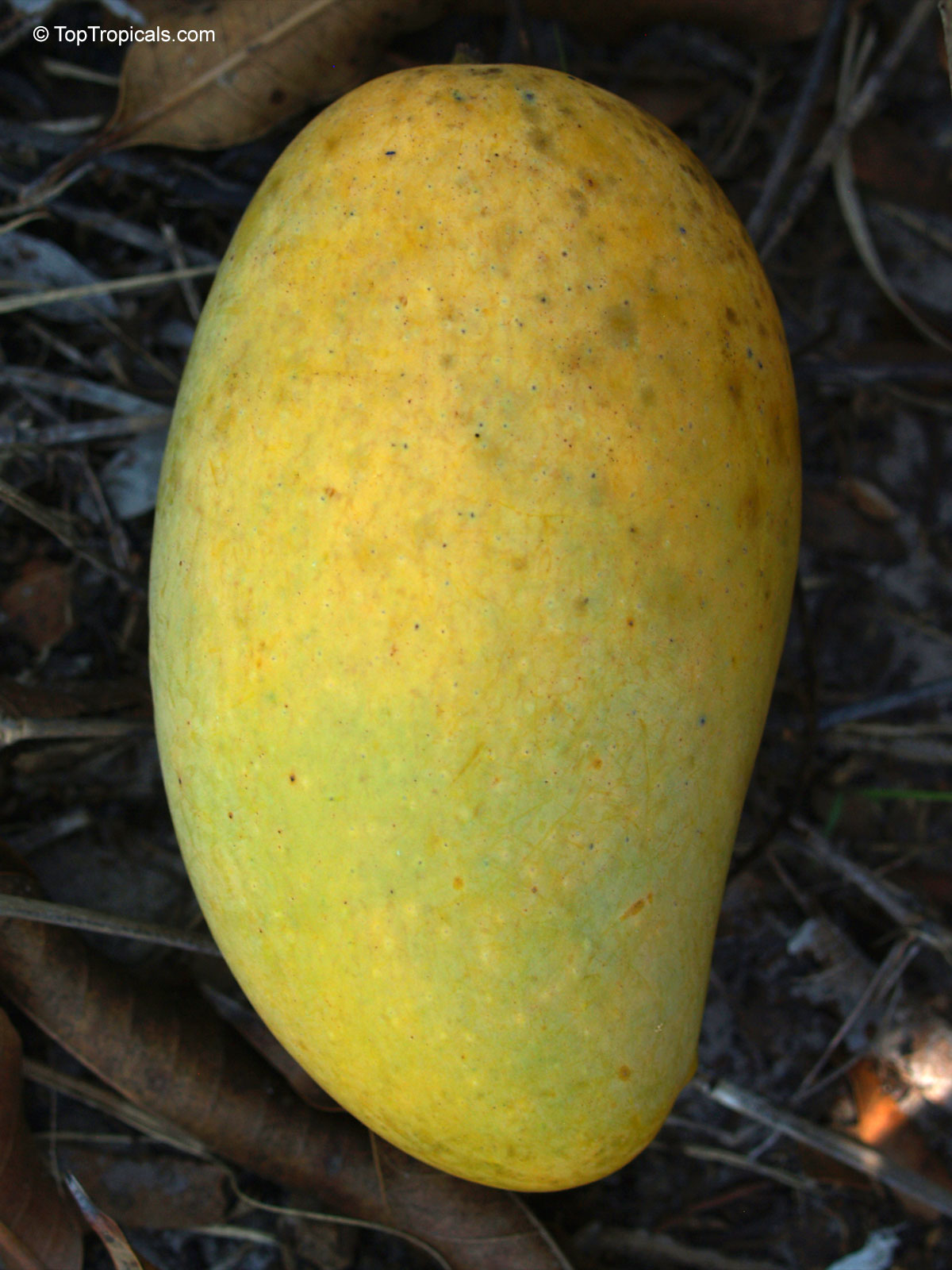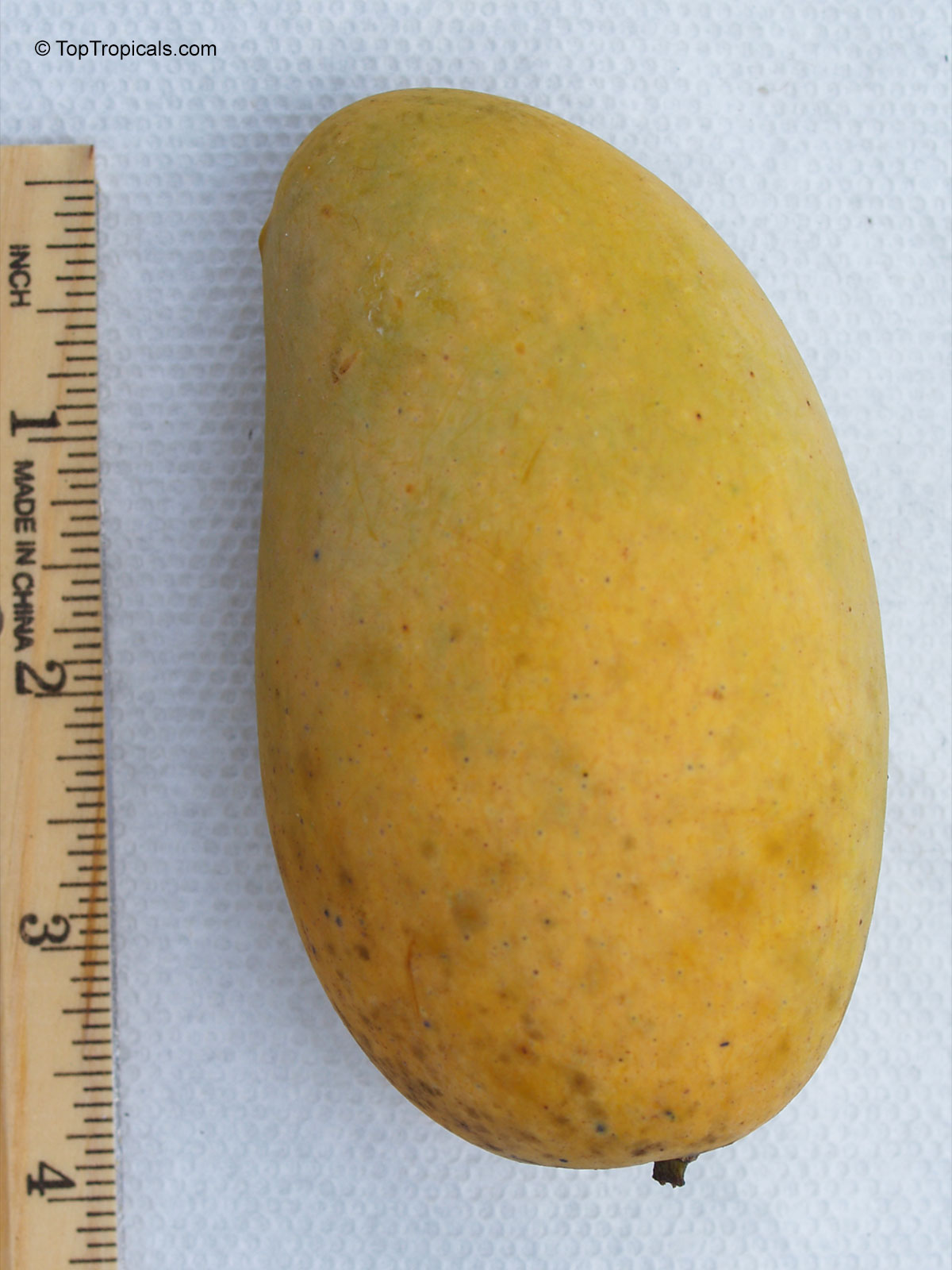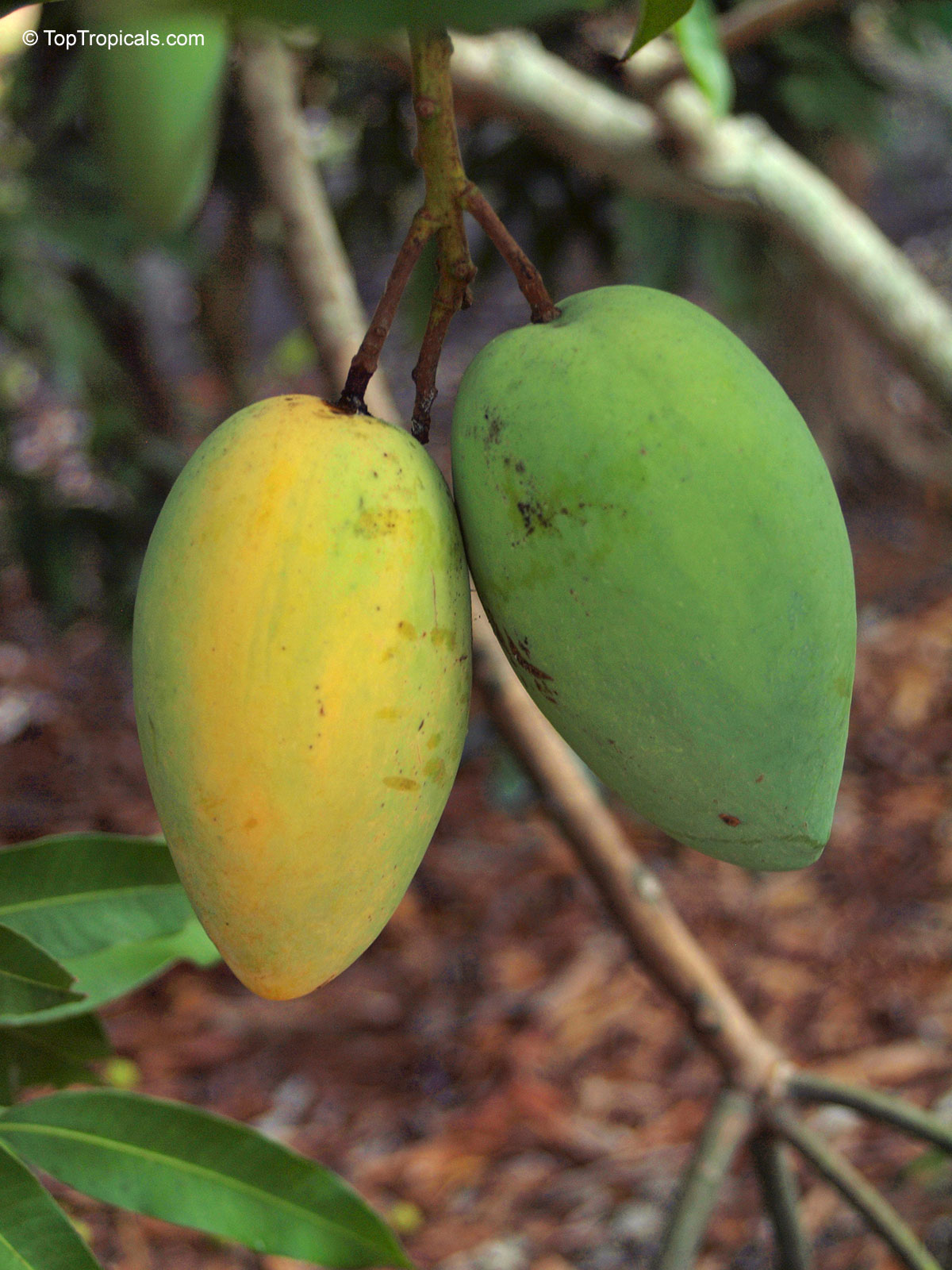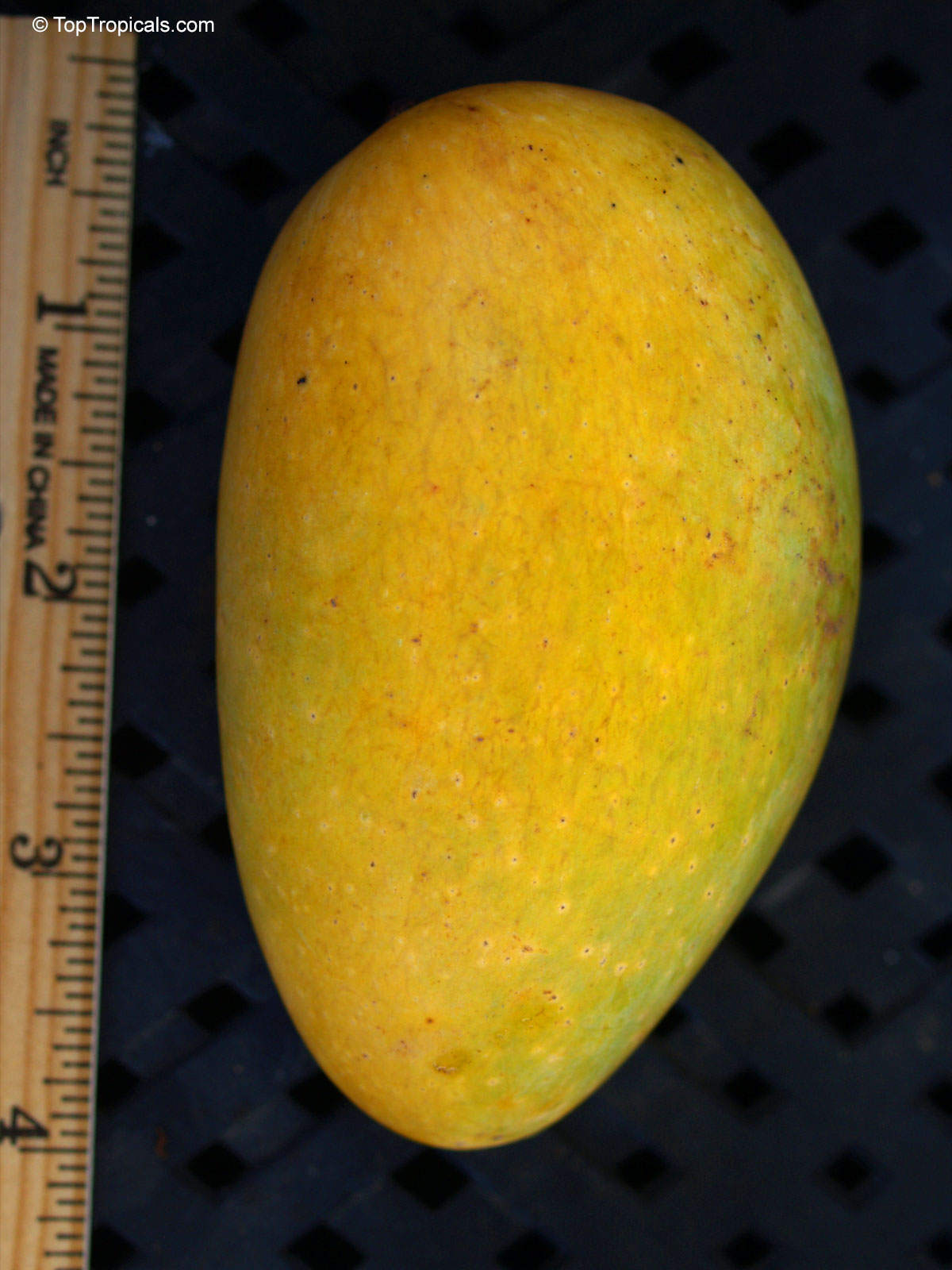Mangifera indica 'Carabao' (Carabao Mango)
Top Tropicals Plant Encyclopedia
Botanical name: Mangifera indica
Common names: Carabao Mango, Philippine Mango, Manila Mango
Cultivar: Carabao
Family: Anacardiaceae
Origin: South Asia and India
Hardiness: 30°F






Mangifera indica (Mango) is a large evergreen tree native to South Asia and among the oldest cultivated fruit trees, grown in India for over 4,000 years. In tropical climates it can reach 60-80 feet with a broad crown of glossy leaves. Small yellowish flowers appear in spring, followed by fleshy drupes known worldwide as mangoes.
Fruit shape varies from oval to kidney-shaped, with skin that may remain green or ripen to yellow, orange, or red. The flesh is juicy and aromatic, sometimes fiberless and sweet, sometimes more resinous depending on type. Mangoes are eaten fresh, dried, blended, or cooked, making them one of the most versatile tropical fruits. Some people experience irritation on the lips from the peel, so fruits are usually eaten peeled.
The tree thrives in full sun and well-drained soil in warm climates, hardy only to USDA Zones 9-11. With hundreds of named cultivars, Mangifera indica remains one of the world s most widely grown and culturally important fruit trees.
See Mango varieties.
Mangifera indica 'Carabao' (Carabao Mango, Philippine Mango) is a premier Philippine variety also known as Manila Mango, Honey Mango, or Champagne Mango. The fruit is medium to large, kidney-shaped, and hangs in clusters on the stem. When ripe, the smooth skin turns bright yellow, revealing rich golden flesh that is soft, fiberless, and intensely sweet with a tropical honey-like aroma. This variety is celebrated worldwide for its outstanding dessert quality and exceptional eating experience. The tree is vigorous and productive, forming a broad canopy and bearing heavily under warm, humid conditions.
'Philippine' adapts very well to South Florida and similar subtropical climates, showing good resistance to local pests and humidity. It thrives in full sun and well-drained soil, with regular watering and light pruning to maintain shape and airflow. This is a relatively cold-hardy variety for a tropical mango, tolerating brief drops in temperature with minimal damage. Trees thrive in USDA Zones 10-11 and need protection from frost, with minimum tolerance down to about 30F.
Related cultivars: Mangifera indica 'Carabao' (Carabao Mango)
- Mangifera indica 'Sunset' ''Sunset'' (Sunset Mango)
- Mangifera indica Alampur Baneshan ''Alampur Baneshan'' (Alampur Baneshan Mango)
- Mangifera indica Alphonso ''Alphonso'' (Alphonso Mango)
- Mangifera indica Baileys Marvel ''Baileys Marvel'' (Baileys Marvel Mango)
- Mangifera indica Beverly ''Beverly'' (Beverly Mango)
- Mangifera indica Bombay ''Bombay'' (Bombay Mango)
- Mangifera indica Cac ''Cac'' (Cac Mango)
- Mangifera indica Carrie ''Carrie'' (Carrie Mango)
- Mangifera indica Choc Anon ''Choc Anon'' (Choc Anon Mango)
- Mangifera indica Coconut Cream ''Coconut Cream'' (Coconut Cream Mango)



